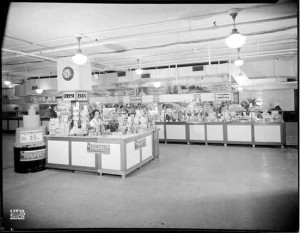Tony Antonias, a New Westminster resident and former Aussie started as a copywriter at radio station CKNW in 1955. He stayed there for the next 40 years—to the day.
While CKNW creative director, Tony wrote the famous Woodward’s $1.49 day jingle on February 17, 1958.
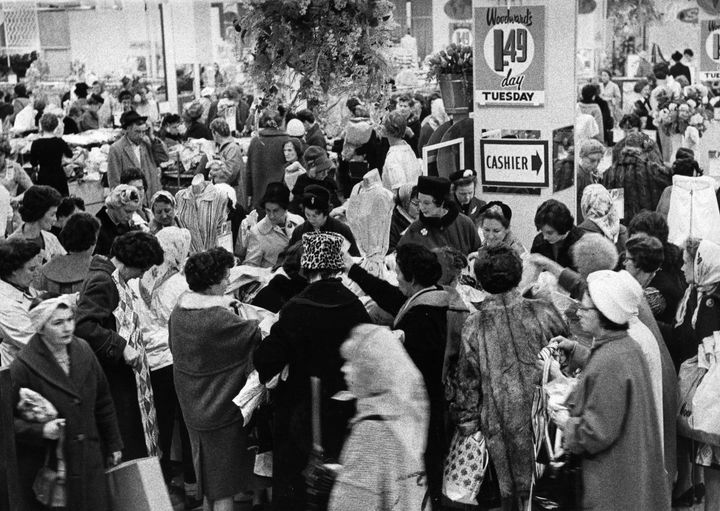
As Tony told me a few years back, the jingle came about almost by accident after he hit the key on a new typewriter and it made a loud ding. When he hit it again, it made another ding—yup $1.49 Day. Tuesday.
Story from Vancouver Exposed: Searching for the City’s Hidden History
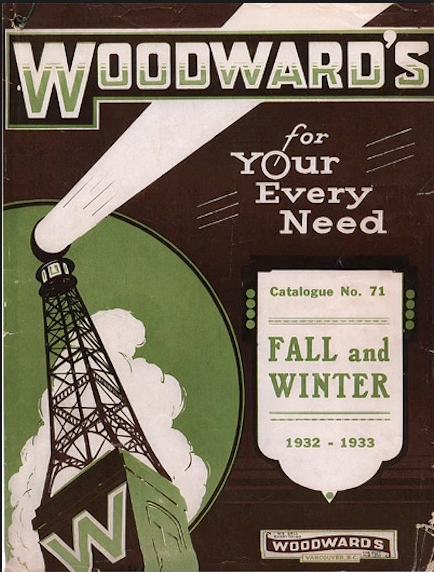
Tony recorded the jingle on the Easter weekend and heard it go to air in April 1958 “after Woodwards took six weeks to decide to use it.”
“Everybody wants to know how the $1.49 jingle came to be,” he told me. “I’ve scripted it and I’ve got it on CDs and they love hearing it.”
Puggy Woodward
Percival Archibald Woodward (Puggy) ran the Woodwards Department Stores for many years. It was Puggy who created Woodward’s famous food floor—and with it, turned the entire concept of retailing on its head.
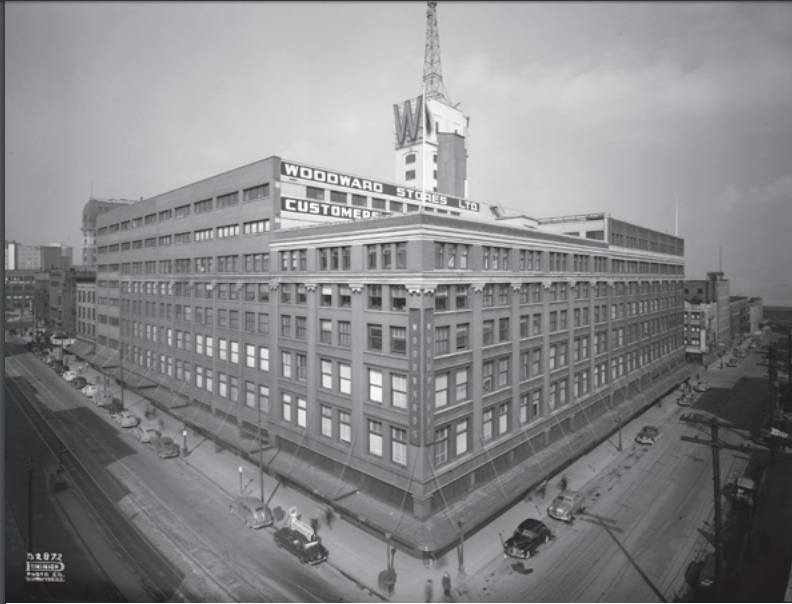
And, it was his idea in 1927 to build a 75-foot-high beacon modelled after the Eiffel Tower to act as a giant billboard advertisement for the department store. The tower held a searchlight that threw out a two million candlepower beam which revolved six times each minute and could be seen from Vancouver Island. When the war hit he was told to remove the tower and the 16-foot W took its place. Puggy predicted that malls were the wave of the future and he was a driving force behind the Park Royal Shopping Centre, which in 1950, was the first shopping mall in Canada.
He died in 1968—10 years after Tony created the Woodward’s jingle. Puggy was a huge philanthropist with an interest in medical research and he left his vast estate to the Mr. and Mrs. P.A. Woodwards Foundation where it continues to do great work.
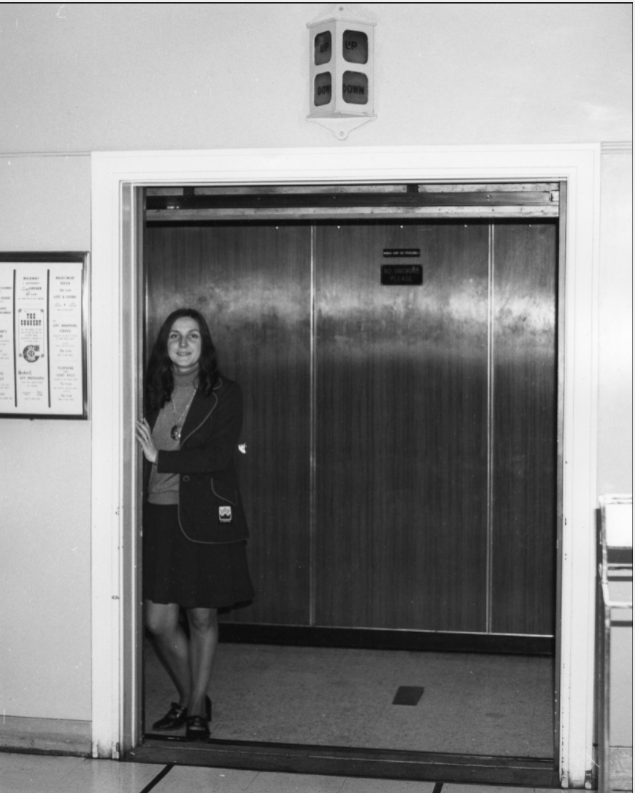
Tony died on January 19, 2019. He was 89.
If that jingle and the famous whistle is not already firmly wedged in your brain for the rest of the day—or if you were born after 1992—you can listen to it here:
Related:
- Woodward’s Christmas windows
- A Brief History of the Woodward’s Department Store
- The Missing Elevator Operators of BC
© All rights reserved. Unless otherwise indicated, all blog content copyright Eve Lazarus.




